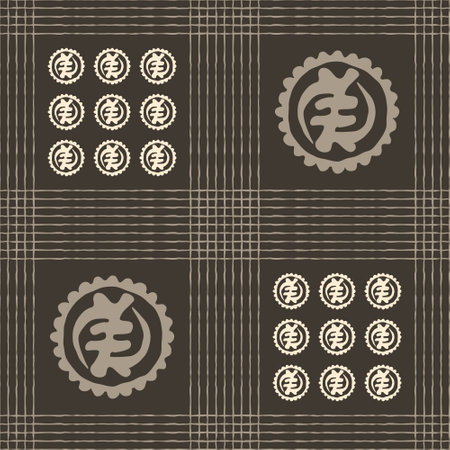Embracing the Seasonal Shift: Understanding Autumn to Winter in the UK
The British landscape transforms dramatically as autumn gives way to winter. The golden hues of falling leaves in Hyde Park gradually surrender to the silvery mists that swirl through country lanes and city streets alike. There is a tangible shift in energy as daylight hours dwindle, temperatures drop, and the air grows crisper—each breath carrying a promise of frost. This transition is more than a change in weather; it seeps into the very fabric of daily life. As we pull out thicker jumpers and warm mugs of tea become an evening ritual, our homes become sanctuaries against the growing cold and darkness. With windows closed tight against the chill and lamps glowing earlier each day, the flow of energy within our living spaces naturally shifts as well. The traditional British appreciation for cosiness—what some might call hygge but is simply second nature here—takes centre stage. Yet, this seasonal enclosure can invite stagnation or heaviness if not approached with intention. Recognising these sensory and energetic changes is vital: by tuning into this unique period, we can consciously adapt our homes and routines, welcoming winter’s quiet beauty while maintaining vibrancy and positivity indoors.
2. Feng Shui Foundations: Adapting Ancient Wisdom to British Homes
The ancient art of Feng Shui, with its roots in Chinese philosophy, finds its essence in balance and harmony—concepts that can be thoughtfully integrated into the characterful homes of the UK. At its core, Feng Shui seeks to optimise the flow of “Qi” (life energy), creating environments that uplift mood, enhance wellbeing, and invite prosperity. As autumn’s golden leaves give way to winter’s crisp hush, this energetic equilibrium becomes especially vital for British households seeking warmth and positivity amid shorter days.
British architecture tells a story of tradition—think Victorian terraces, Georgian townhouses, or countryside cottages with their cosy nooks and distinctive features. The key lies in weaving Feng Shui’s timeless principles into these unique spaces without losing their local charm. Begin by focusing on the five elements: Wood, Fire, Earth, Metal, and Water. Each element brings its own energy and can be subtly introduced through colour schemes, materials, and décor choices suited to British tastes.
| Feng Shui Element | British Home Integration | Seasonal Touch |
|---|---|---|
| Wood | Oak shelves, house plants | Potted ivy on window sills |
| Fire | Candles, fireplace accents | Warm-toned throws or cushions |
| Earth | Ceramic mugs, stone coasters | Clay pots with seasonal flowers |
| Metal | Copper pans, brass knobs | Silver candle holders for winter glow |
| Water | Glass vases, reflective mirrors | Bowl of water with floating cranberries |
Harmony is also achieved through mindful arrangement. British homes often feature narrow corridors and alcoves; here, use mirrors strategically to guide light and energy rather than let it stagnate. Clear clutter from entryways—a classic tip both in Feng Shui and British etiquette—to welcome fresh opportunities as seasons shift. Soft lighting, layered textures, and natural scents such as cedar or rosemary can further bridge Eastern wisdom with the quintessentially British love for comfort and tradition. In blending these practices thoughtfully, each room becomes a sanctuary where positive energy flourishes throughout autumn and well into the heart of winter.

3. Clearing and Inviting: Declutter and Energise with Love
As autumn leaves scatter across your garden paths and crisp winds begin to whistle through the eaves of your home, it’s time to gently let go of the old to make way for winter’s quiet magic. In the UK, where our homes are often snug sanctuaries against the chill, clutter can easily accumulate in hallways, under stairs, or tucked in corners by the fire. Mindful clearing at this time is more than a seasonal chore—it’s a sacred ritual that prepares your space for fresh beginnings. Imagine yourself sorting through coats piled on pegs near the front door, dusting off boots resting by the mat, and recycling forgotten letters stacked on the sideboard. Each item you release creates room for positive chi—the life force energy—to swirl freely throughout your home.
Welcoming Chi Through British Doors and Windows
British homes have their own unique charm: bay windows looking onto frosty gardens, sash windows that rattle in the wind, and sturdy wooden doors that open directly onto bustling streets or tranquil countryside lanes. To invite positive energy inside, open these portals wide—if only for a few moments each morning—to let stale air drift away and allow invigorating winter breezes to refresh every room. As you do, imagine light pouring in and illuminating forgotten nooks, chasing away stagnation with every sunbeam.
Cherishing Sentiment While Letting Go
Decluttering doesn’t mean discarding cherished memories or stripping your home of character. Instead, approach each object with love: thank it for its place in your story, then decide if it truly serves your present journey. This act of gratitude transforms clearing into an act of self-care and respect for your environment—a distinctly British sensibility rooted in appreciation for tradition and history.
Creating Space for Warmth and Connection
With clutter gently cleared and energy renewed, you’ll find your living space feels lighter—ready to welcome friends in from the cold or provide a peaceful retreat after a blustery walk along cobbled streets. By mindfully preparing your home as winter approaches, you invite not just warmth and comfort but also harmony and joy into every corner—fostering positive energy that endures even as the nights grow longer.
4. Harnessing Natural Light: Maximising British Daylight Hours
As autumn’s golden glow yields to the gentle hush of winter, British daylight becomes a precious resource—soft, fleeting, and often elusive. In Feng Shui, natural light is considered a vital conduit for positive energy, or “chi,” making it essential to capture every possible ray during these shorter days. Here are practical, spirit-nourishing tips tailored for UK homes to harness and amplify available sunlight, transforming your space into a beacon of warmth and positivity even as the evenings draw in.
Embrace Bay Windows and Conservatories
Many British homes are blessed with bay windows or conservatories—architectural gifts that invite daylight deep into your living spaces. Keep window sills uncluttered, trim back any outside foliage that may block incoming light, and use lightweight or sheer curtains. This not only allows more sunlight to filter through but also symbolises an open invitation for fresh energy to enter your home.
Mirrors: Doubling the Light, Doubling the Chi
Strategically placed mirrors are a cornerstone of both classic British interiors and Feng Shui practice. Position mirrors opposite windows or near natural light sources; this simple act doubles the perceived brightness and encourages positive chi to flow freely throughout your rooms. Avoid placing mirrors directly facing doors, as this can bounce energy straight back out.
Optimal Mirror Placement Guide
| Room | Best Mirror Placement | Feng Shui Benefit |
|---|---|---|
| Living Room | Opposite bay/conservatory windows | Amplifies community energy & warmth |
| Dining Room | Adjacent to table, angled towards window | Symbolises abundance & shared joy |
| Hallway | Side wall facing incoming light (not door) | Keeps energy circulating gently |
Pale Palettes: Inviting Lightness Within
The muted skies of a British winter call for interiors that reflect and magnify what little sunshine graces us each day. Opt for pale wall colours—soft creams, gentle greys, blush pinks or sage greens—which bounce light around the room while evoking a serene, harmonious atmosphere. If repainting isn’t an option, introduce lighter textiles such as throws, cushions, or rugs to create pockets of luminosity.
Cherish the Ritual of Opening Up Each Morning
There’s something distinctly British about drawing back heavy curtains and letting in the day, no matter how grey it may be. Make this a mindful ritual: greet the morning by opening blinds and curtains in every room, allowing natural light and fresh energy to sweep through your home. This daily gesture welcomes renewal and lifts spirits during even the darkest months.
In embracing the subtle art of capturing winter’s soft light—from architectural features to reflective surfaces and calming colour schemes—you ensure your home remains a sanctuary of positive energy throughout the seasonal transition. By honouring both nature’s rhythms and ancient wisdom, you’ll find yourself cocooned in gentle brightness all winter long.
5. Balancing Warmth and Calm: Cosy Comforts and Textures
As the British countryside shifts from russet leaves to frost-tipped mornings, embracing the nation’s love for snug comforts is more than just tradition—it’s a way to cultivate positive energy at home. In Feng Shui, warmth and softness are not merely luxuries, but essential elements that nurture the heart of your living space during winter’s approach. Imagine curling up in a favourite armchair, swathed in a wool throw woven in Scottish tartan or Cotswold cream, as the wind whistles outside. These textures do more than shield you from the chill; they ground your energy and invite gentle, nurturing Chi into your rooms.
Consider the British ritual of brewing a pot of tea—Earl Grey or Yorkshire Gold—served in sturdy mugs with a biscuit on the side. This simple act embodies both comfort and connection, aligning perfectly with Feng Shui principles of harmony. Place your tea station near the kitchen’s ‘wealth’ corner (the far left from the entrance), infusing your home with abundance and warmth. As dusk settles early, let the golden glow of a roaring fireplace or flickering candles illuminate corners and banish stagnant shadows. Fire represents dynamic Yang energy in Feng Shui, but it must be balanced: soften its intensity by arranging plush cushions or layering rugs beneath your feet.
The art lies in layering textures—velvet cushions on linen sofas, chunky knits beside polished wood—each adding dimension without cluttering flow. Choose natural fibres and earthy hues that echo Britain’s winter palette: heather grey, moss green, deep navy, and soft cream. By mindfully celebrating these seasonal comforts, you create not just physical warmth but an emotional sanctuary where energy circulates gently and calm prevails throughout the darkest months.
6. Inviting Community and Connection
As the crisp air of winter gently settles over the UK, the transition from autumn becomes not only a shift in temperature but also a transformation in the social landscape of our homes. According to feng shui, the flow of positive energy—or qi—thrives when our spaces are filled with warmth, laughter, and genuine connection. In British culture, fostering community is deeply woven into the fabric of daily life, especially as we gather indoors during the colder months.
One timeless tradition that encapsulates this spirit is the Sunday roast. Inviting neighbours or friends for a hearty meal does more than warm the kitchen; it invigorates your home with shared stories and joyful camaraderie. The aroma of roasting vegetables, the golden glow of gravy, and the clinking of glasses all contribute to an atmosphere where energy circulates freely, dispelling any stagnation that winter might bring.
Family board game nights are another cherished custom that aligns beautifully with feng shui principles. The gentle hum of conversation around a well-loved table game creates ripples of positivity throughout the home. These evenings encourage laughter, playful competition, and togetherness—qualities that uplift both spirit and space as daylight wanes earlier each day.
To further enhance this sense of community within your home, consider setting aside a dedicated communal area—a cosy corner with inviting cushions or a welcoming dining table adorned with seasonal touches like holly sprigs or candles. Such details not only honour British traditions but also act as energetic anchors, drawing loved ones together and encouraging open-hearted exchanges.
By intentionally inviting others into our homes during this seasonal transition, we nurture bonds that sustain us through the darker days. In doing so, we create sanctuaries alive with warmth and positive energy, echoing age-old British values of hospitality and neighbourliness. Let your home be a beacon against winter’s chill—a place where connection flourishes and feng shui thrives.
7. Plants and Natural Touches: Bringing the Outside In
As the British landscape transforms from the golden hues of autumn to the quiet elegance of winter, our homes can feel a touch colder, both in temperature and spirit. One of the most powerful Feng Shui practices for maintaining positive energy during this seasonal shift is to invite nature inside. While winter may seem sparse outdoors, the UK’s native flora offers an abundance of evergreens and hardy plants that symbolise resilience and vibrancy.
Celebrating British Seasonal Flora
Holly, with its glossy leaves and bright red berries, is not only iconic in festive traditions but also revered in Feng Shui for attracting protective energy and vitality. Ivy, often seen cascading over old stone walls or creeping up village cottages, brings a sense of continuity and gentle growth—even in the darkest months. Mistletoe, suspended above doorways, has long been associated with love and harmony, making it perfect for promoting warmth and connection in your home.
Keeping Energy Flowing with Evergreens
Placing arrangements of these native evergreens in living spaces helps maintain a vibrant chi (energy) throughout winter. Consider gathering sprigs of holly for your mantelpiece, weaving ivy along banisters, or hanging mistletoe in communal areas. These natural touches act as subtle reminders that life persists even as nature appears to rest.
A Sensory Connection to the Outdoors
The scent and texture of fresh foliage bring comfort on grey days and help bridge the gap between your indoor sanctuary and the wild beauty outside. Allow your intuition to guide you—perhaps a small potted bay tree by the kitchen window or a cluster of pine cones arranged on your coffee table will call forth memories of woodland walks.
Incorporating these elements not only honours the cyclical wisdom of British seasons but also ensures your home remains a nurturing haven where positive energy flows freely, no matter how wintry the world may become.


